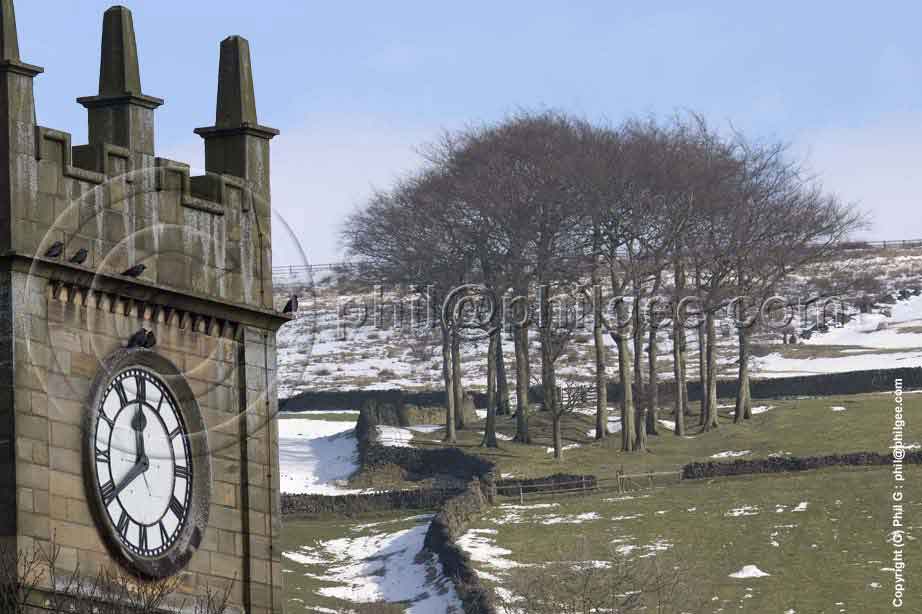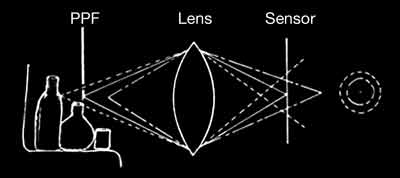You can see from the schematic that as an aperture is introduced the angle of the rays decreases and so does the diameter of the Blur Circle on the sensor if this blur circle is less then the Circle of Confusion then it will appear sharp
( The term Circle of Confusion refers to a specific size of Blur Circle in given conditions)
At the position a point has grown to a size that the eye can see a difference i.e. a Fuzzy Blob rather than a 'sharp' point, we would say is the limit of the 'Depth of Field' (DoF) it is out of focus (soft); so the distance up to that position on either side of the PPF is the DoF for that lens setting check out: DoF & CoC notes in earlier section.
One must also remember it is not just the size the Blur Circle on the sensor, but rather its size in the final image and the viewing distance.
If your final image is to be 20x larger than the sensor size, the Circle of Confusion (Blur Circle) on the sensor will have to be 20x smaller. Because as you enlarge an image the Blur Circles get bigger and depth of field reduces, the last point to become 'soft' will be on the PPF.
In addition the closer the viewer is to the 'print' the smaller the value of the Circle of Confusion used needs to be if it is to appear sharp.


